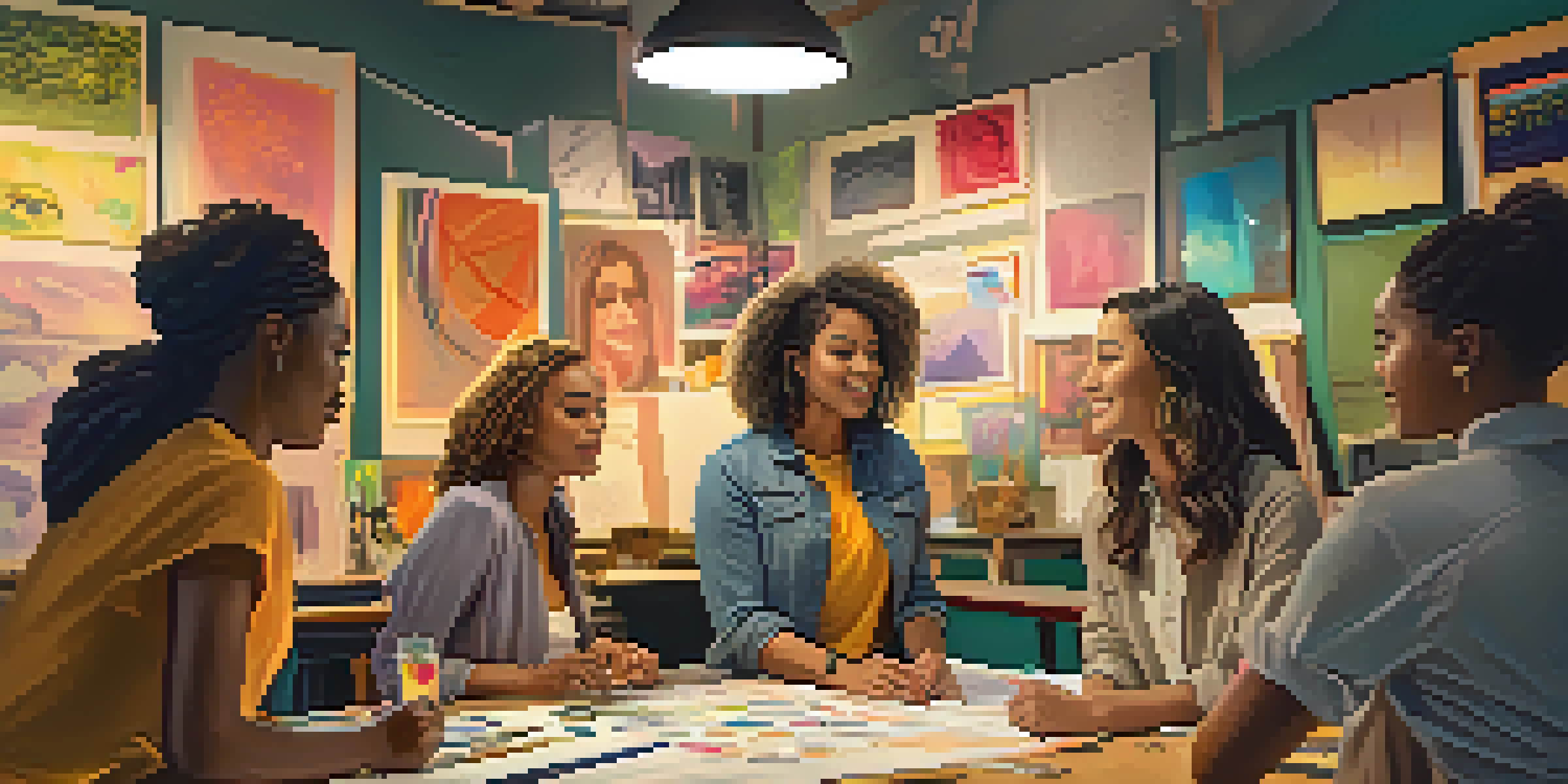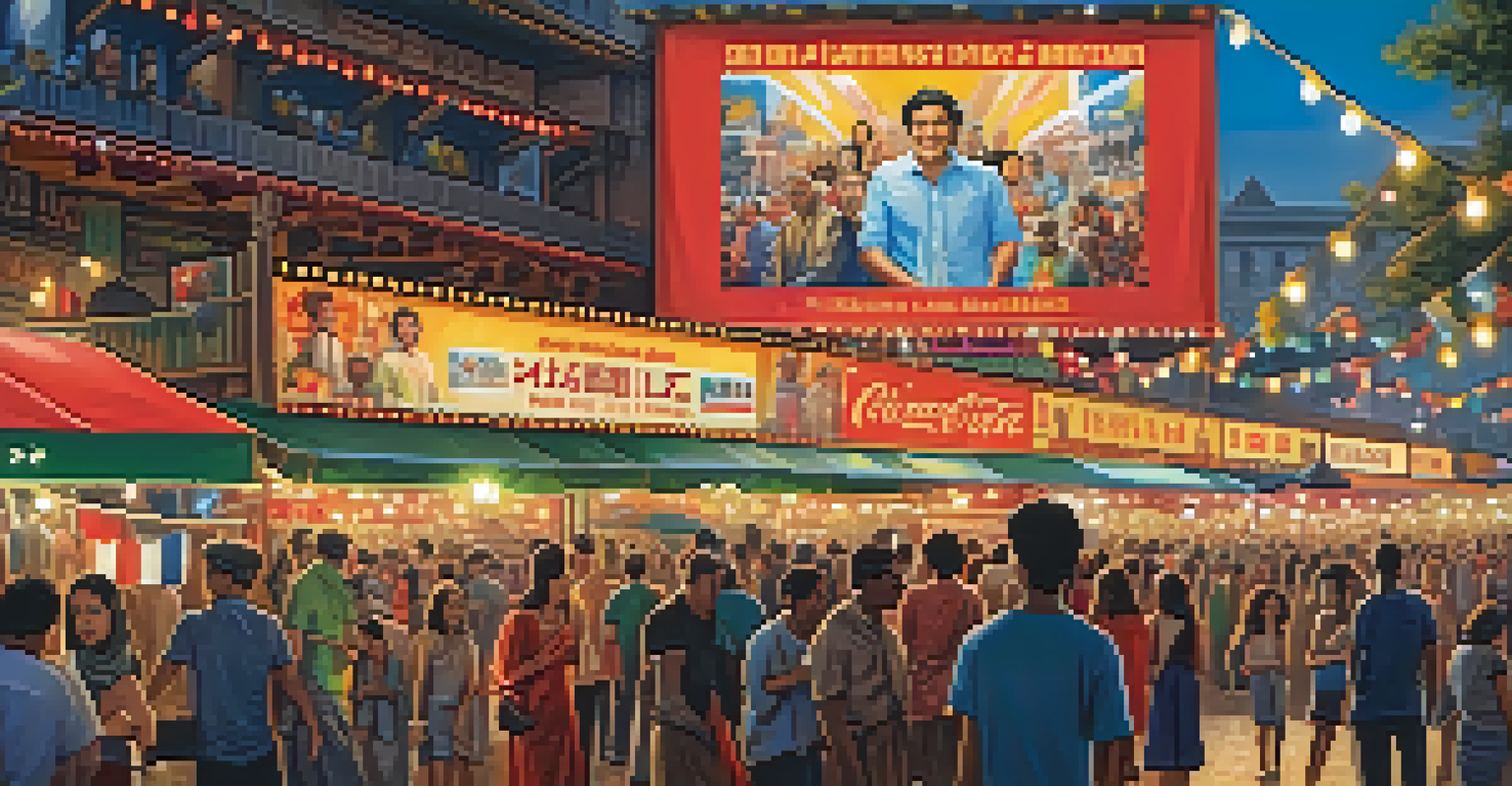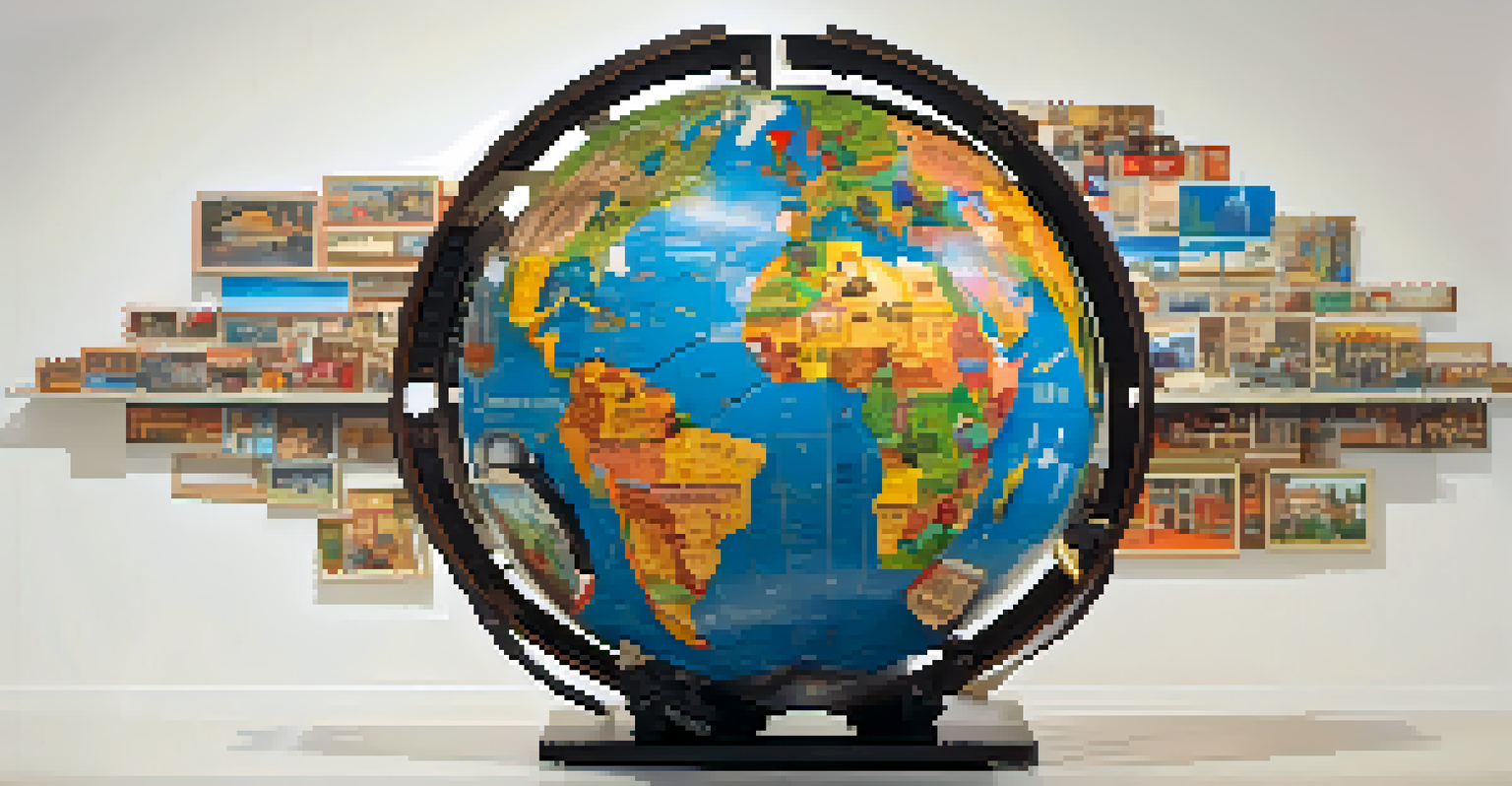Gender and Cultural Identity in Global Cinema

Understanding Gender Representation in Film
Gender representation in film often reflects societal norms and values. Historically, women have been portrayed in limited roles, primarily as love interests or supporting characters. However, recent years have seen a shift as filmmakers challenge stereotypes and provide more nuanced portrayals of women and men alike. This evolution not only enriches the narrative but also encourages audiences to rethink their perceptions of gender roles.
Cinema is a mirror by which we often see ourselves.
For example, films like 'Wonder Woman' and 'Mad Max: Fury Road' showcase strong female leads who defy traditional expectations. These characters not only possess strength but also vulnerability, illustrating a more complex understanding of femininity. Such representations can empower viewers, especially young women, by presenting them with diverse role models. As audiences demand more authentic portrayals, filmmakers are increasingly responding with varied and dynamic gender representations.
This shift in representation is not just about equality; it’s about authenticity. When films reflect the diverse experiences of gender, they resonate more deeply with viewers. This connection can lead to greater empathy and understanding, breaking down barriers between different cultures and gender identities.
Cultural Identity and Its Cinematic Expression
Cultural identity plays a pivotal role in shaping cinematic narratives. Films often reflect the unique traditions, values, and struggles of different cultures. From Bollywood’s vibrant storytelling to the understated subtleties of Japanese cinema, cultural identity enriches film by providing context and depth. This diversity allows audiences to experience and appreciate the world through various cultural lenses.

Take, for instance, the film 'Crouching Tiger, Hidden Dragon,' which beautifully blends martial arts with themes of honor and duty rooted in Chinese culture. By doing so, it not only entertains but also educates global audiences about these cultural nuances. Such films facilitate cross-cultural dialogue, fostering a greater understanding of the complexities of identity. As viewers engage with these stories, they gain insight into the values and beliefs that shape different societies.
Evolving Gender Representation in Film
Films are increasingly showcasing diverse and authentic portrayals of gender, challenging traditional stereotypes.
Moreover, the global cinema landscape is becoming increasingly interconnected. As filmmakers collaborate across borders, they share their cultural identities, enhancing the richness of storytelling. This fusion of perspectives leads to innovative narratives that resonate on multiple levels, inviting audiences to explore both their own cultural identities and those of others.
Intersectionality: The Overlap of Gender and Culture
Intersectionality is a crucial concept in understanding how gender and cultural identity intersect in film. It acknowledges that individuals experience multiple identities simultaneously, affecting their perspectives and experiences. For example, a woman of color may face different challenges than a white woman due to the intersection of race and gender. This complexity is often reflected in films that focus on characters navigating these overlapping identities.
The stories that we tell ourselves are the stories that we live by.
Films like 'The Joy Luck Club' illustrate intersectionality by portraying the experiences of Chinese American women grappling with cultural expectations and gender norms. Through these narratives, viewers gain insight into the unique struggles faced by individuals at the crossroads of multiple identities. Such stories highlight the importance of representation in media, ensuring that diverse experiences are acknowledged and celebrated.
As audiences become more aware of intersectionality, there’s a growing demand for films that authentically represent these complex identities. This shift encourages filmmakers to create stories that reflect the realities of a diverse society. By embracing intersectional narratives, cinema can foster a deeper understanding of the multifaceted nature of human experience.
Globalization's Impact on Film and Identity
Globalization has profoundly influenced the film industry, enabling stories to transcend borders. With the advent of streaming platforms, international films are more accessible than ever, exposing audiences to diverse narratives. This increased exposure not only broadens viewer perspectives but also challenges traditional notions of identity and representation in cinema. As a result, filmmakers are inspired to incorporate global themes into their work.
An example of this is the film 'Parasite,' which gained worldwide acclaim for its commentary on class divisions in South Korea. While it is rooted in a specific cultural context, its themes resonate universally, allowing audiences from various backgrounds to connect with its message. This global appeal illustrates how cultural narratives can address shared human experiences, fostering a sense of unity among viewers.
Cultural Identity Enriches Narratives
Cinematic storytelling benefits from cultural identity, allowing audiences to engage with unique traditions and values.
However, globalization also raises questions about cultural homogenization. As dominant cultures often overshadow local narratives, there’s a risk of losing unique voices in cinema. It’s essential for filmmakers to strike a balance, ensuring that while they embrace global influences, they remain true to their cultural roots.
The Role of Women Filmmakers in Changing Narratives
Women filmmakers are at the forefront of reshaping narratives in global cinema. Their unique perspectives often bring fresh insights into gender and cultural identity, challenging traditional storytelling norms. By taking on roles as directors, writers, and producers, women are creating films that authentically represent their experiences and those of marginalized communities. This shift is crucial in an industry historically dominated by male voices.
Take Ava DuVernay, for instance, whose work in films like 'Selma' and 'A Wrinkle in Time' highlights the importance of representation. Her commitment to telling stories that reflect diverse experiences empowers other female filmmakers to share their voices. When women lead the charge in filmmaking, audiences benefit from richer and more varied narratives that delve into complexities of identity.
Moreover, the rise of women in cinema encourages a broader conversation about equity in the film industry. As they inspire future generations of filmmakers, the industry gradually evolves towards more inclusive practices. This change not only enhances storytelling but also helps dismantle the barriers that have long hindered diverse representation in film.
Audience Reception: The Power of Representation
Audience reception plays a critical role in the success of films that explore gender and cultural identity. Viewers are increasingly seeking content that resonates with their experiences, leading to heightened demand for diverse narratives. When films authentically represent various identities, audiences feel seen and validated, fostering a deeper connection to the story. This connection can drive box office success and critical acclaim.
For instance, films like 'Black Panther' not only broke box office records but also sparked conversations about representation and cultural pride. Audiences celebrated the film's portrayal of African culture, highlighting the importance of seeing oneself reflected in media. Such representations can empower marginalized communities, promoting a sense of belonging and identity.
Women Filmmakers Drive Change
The rise of women filmmakers is reshaping narratives, ensuring diverse voices and experiences are authentically represented.
Additionally, social media has amplified audience voices, allowing viewers to share their thoughts on representation in film. This feedback loop encourages filmmakers to be more mindful of inclusivity in their storytelling. As audiences continue to advocate for diverse narratives, the film industry may shift to reflect these demands more closely, ultimately enriching the cinematic landscape.
Future Directions in Gender and Cultural Identity in Cinema
The future of cinema is bright as filmmakers increasingly embrace themes of gender and cultural identity. As society continues to evolve, so do the stories we tell. The demand for authentic representation is driving innovation, encouraging filmmakers to explore complex narratives that resonate with diverse audiences. This trend suggests that future films will not only entertain but also provoke thought and inspire change.
Moreover, the rise of technology and digital platforms is democratizing film production and distribution. Independent filmmakers from various backgrounds can share their stories without the constraints of traditional studio systems. This shift opens the door for more diverse voices to emerge, enriching the cinematic landscape with unique perspectives on gender and culture.

As the conversation around representation continues, audiences will play a crucial role in shaping the future of cinema. By supporting films that prioritize diverse narratives, viewers can influence the industry to create stories that reflect the complexities of our global society. This collaborative effort between filmmakers and audiences holds the potential to transform cinema into a more inclusive and representative art form.